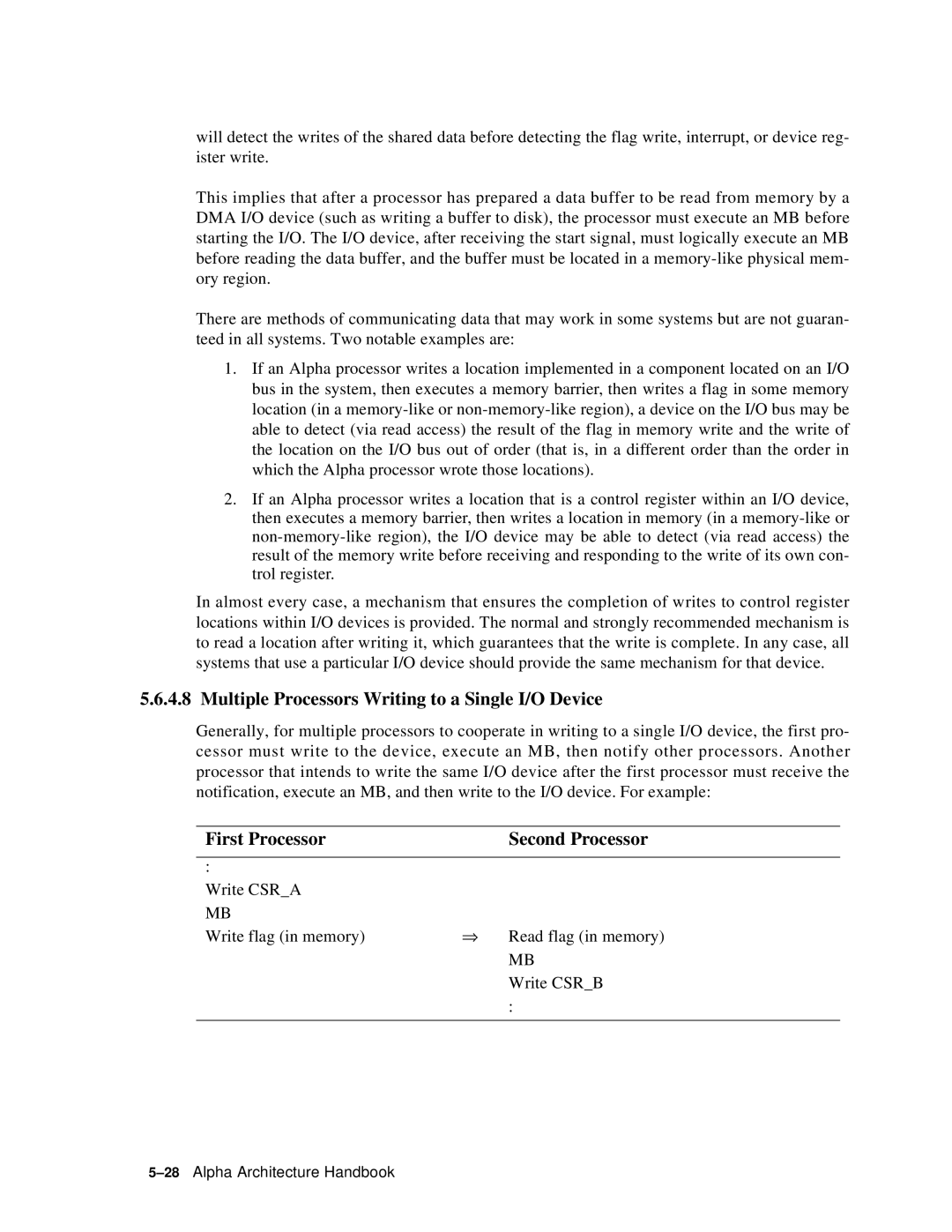will detect the writes of the shared data before detecting the flag write, interrupt, or device reg- ister write.
This implies that after a processor has prepared a data buffer to be read from memory by a DMA I/O device (such as writing a buffer to disk), the processor must execute an MB before starting the I/O. The I/O device, after receiving the start signal, must logically execute an MB before reading the data buffer, and the buffer must be located in a
There are methods of communicating data that may work in some systems but are not guaran- teed in all systems. Two notable examples are:
1.If an Alpha processor writes a location implemented in a component located on an I/O bus in the system, then executes a memory barrier, then writes a flag in some memory location (in a
2.If an Alpha processor writes a location that is a control register within an I/O device, then executes a memory barrier, then writes a location in memory (in a
In almost every case, a mechanism that ensures the completion of writes to control register locations within I/O devices is provided. The normal and strongly recommended mechanism is to read a location after writing it, which guarantees that the write is complete. In any case, all systems that use a particular I/O device should provide the same mechanism for that device.
5.6.4.8 Multiple Processors Writing to a Single I/O Device
Generally, for multiple processors to cooperate in writing to a single I/O device, the first pro- cessor must write to the device, execute an MB, then notify other processors. Another processor that intends to write the same I/O device after the first processor must receive the notification, execute an MB, and then write to the I/O device. For example:
First Processor | Second Processor |
|
|
: |
|
Write CSR_A |
|
MB |
|
Write flag (in memory) | ⇒ Read flag (in memory) |
| MB |
| Write CSR_B |
| : |
|
|
